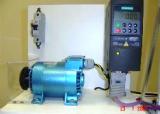Latest frequency converters: control system
 The main element in the frequency converter control system is a digital signal processor or microcontroller. The control system can be uniprocessor or multiprocessor. Uniprocessor systems have a number of disadvantages.
The main element in the frequency converter control system is a digital signal processor or microcontroller. The control system can be uniprocessor or multiprocessor. Uniprocessor systems have a number of disadvantages.
The fact is that the microcontroller has high requirements for the presence of built-in modules and output-input ports, for fast response and memory capacity. But if the task is to manage a system of electrical equipment of low complexity, then the advantage of a single-processor system in this case will be the simplicity of software and hardware implementation.
The structure of frequency converters
Most of the frequency converters today consist of a dual-processor base. At the same time, processor # 1 performs the main functions of converters: it implements algorithms for controlling the inverter and the rectifier. Processor #2 provides communication with the upper level system and operation of the control panel.
It should also be noted that functions between processors can be distributed in other ways. The advantages of a dual-processor system over a single-processor system include: speed and memory size, simplified software development for each controller, and reduced requirements for the first and second processors in terms of on-board peripherals. The inverter drivers are controlled by generating a 6-channel PWM signal with the addition of «dead time». The PWM module in many microcontrollers is implemented in hardware.
How is the system monitored?
To obtain an output voltage waveform that is close to sinusoidal, dead time correction is applied by hardware or software. Also, the frequency converters are controlled by the panel of analog and digital inputs. Structurally, such electrical equipment is built on the module principle. This allows the introduction of functional modules, which, together with the embedded software, make it possible to obtain different electric drive configurations — from open (simple) to closed systems.
These expansion modules have communication interfaces, digital and analog outputs and inputs. Additional memory (Flash memory) and internal non-volatile memory are used to store parameters, settings, alarm log and other necessary information.
See on this topic: VLT AQUA Drive frequency converters for pump units
